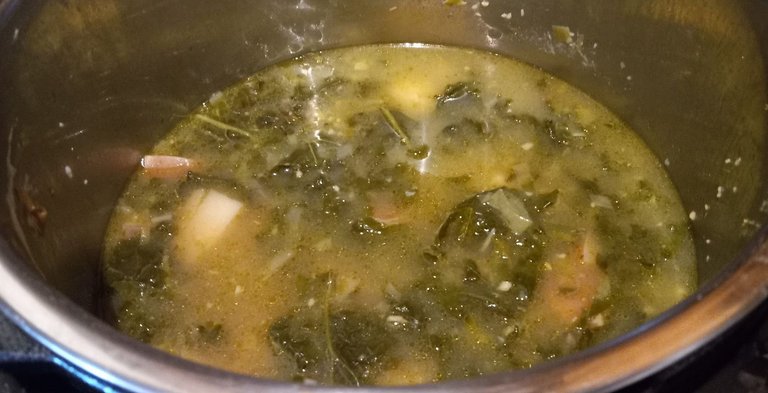Time seems to slide away very quickly these days, and even though I'm considerably past due for a garden update, I just haven't managed to find the time.
But "better late than never," as the old saying goes!
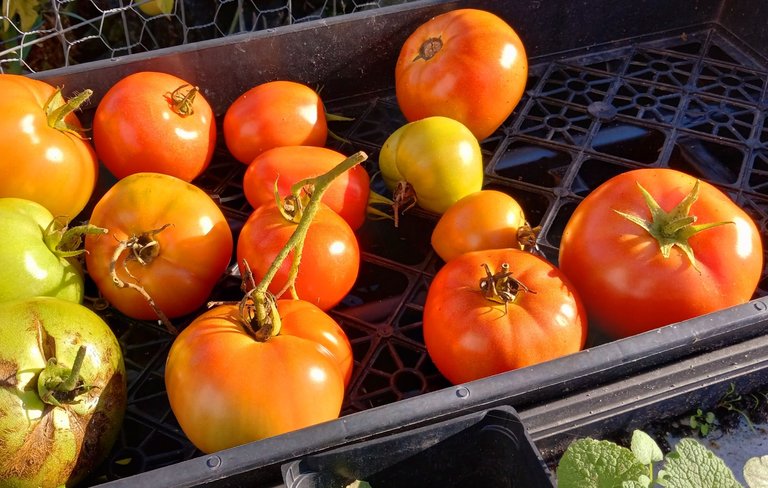
Winding Down for the Year
The tomatoes are among the few final things we have been harvesting.
It was a somewhat disappointing harvest this year, and it was also rather late, due to a long cold spring. The ones pictured above are currently ripening in the sun in a protected area, having been picked largely green or just thinking about turning red. What remains on the bushes is quite limited and it's doubtful that they will ripen significantly before the end of the season.
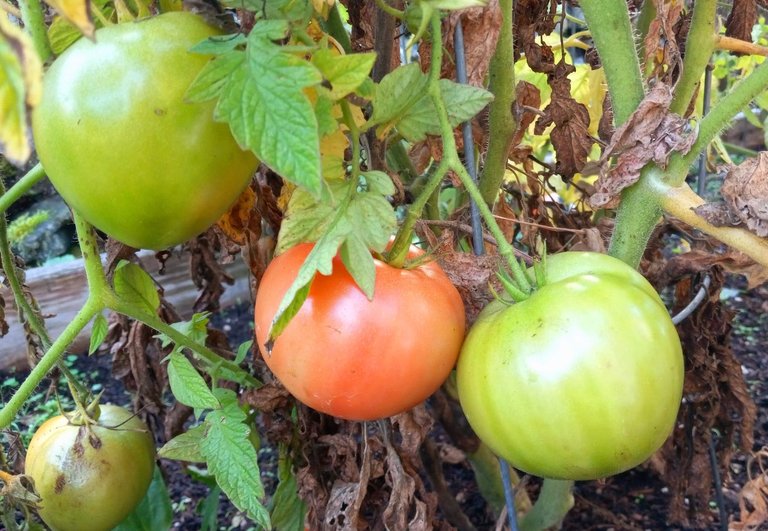
First frost is right around the corner (usually early November), so that will be the end for the tomatoes!
Most of what we managed to pick was either used immediately, or we decided to freeze them whole, to be used for sauce later.
Yes, you really can freeze tomatoes! If you lay them out on trays or cookie sheets and set them in the freezer for at least 24 hours before bagging them, they'll be just fine for sauces later!
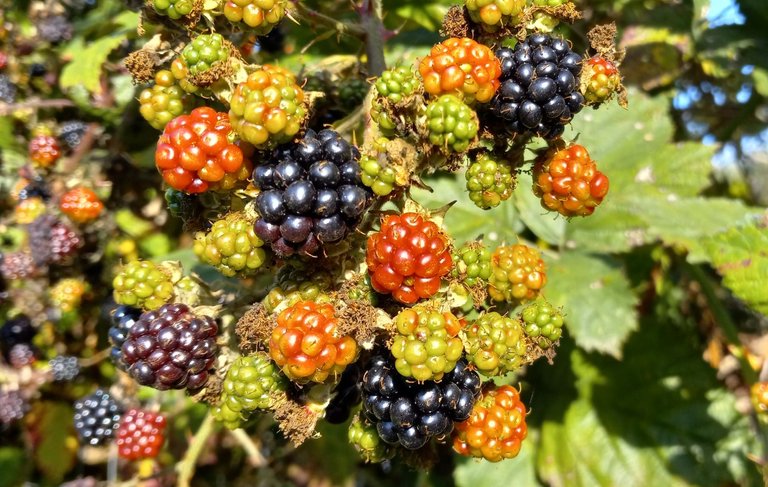
Blackberries
There are still many blackberries on the vines, but they have reached that late harvest stage where the berries are really not that good anymore because they have sat on the vine for a long time to ripen. In general, it's not a good idea to harvest blackberries much beyond the second week of October.
We did have a really good crop this year, especially given our fairly limited source. The berries only grow along a short section of our fence line but since we have been cultivating and tending them for a few years they do yield plentifully.

Our mess of blackberries
We harvested enough to make two gallons of blackberry wine which will be ready after the new year, and we had plenty to eat while they were fresh, and there is also something on the order of 30lbs in the freezer now. All in all, that would be a good year!
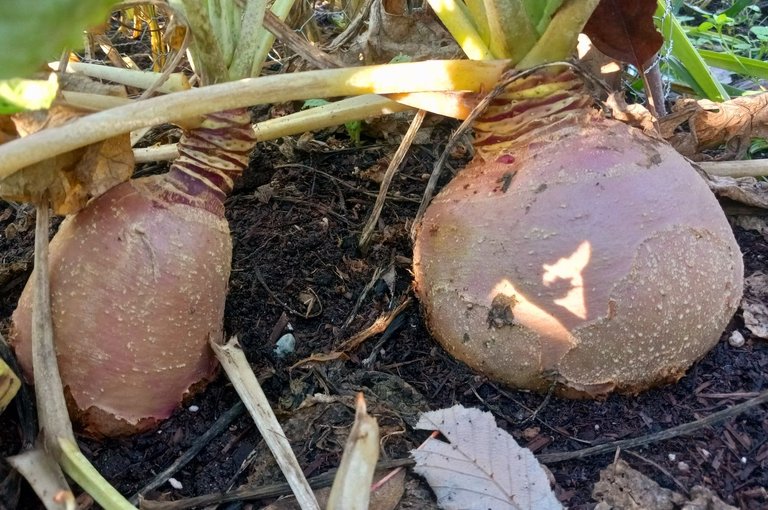
The one on the right is almost six inches across!
Rutabagas and Leeks
The rutabagas were a first-year experiment for us. All in all we would have to declare the experiment a success, although we did have some minor issues with parts of the tips being eaten by worms. They have now reached their late fall dormancy stage where they just kind of maintain in the ground.
Hopefully we will be able to continue using them for a few months; they are a really nice winter vegetable!

It was also our first year to attempt growing leaks. We would have to say it went moderately well. The leaks were a little bit substandard as far as size goes, but they are very tasty. Next year, we'll have to do a better job of thinning and transplanting earlier because the roots get very entangled from seed, and when you wait too long you slow the growth due to "root insult" during the transplanting process.
Like the rutabagas, they are still in the ground and entering their late fall dormancy stage and we will have to harvest them before it starts freezing, however.
Leek, potato and kale soup!
I did find a recipe for a marvelous leek, potato and kale soup which we have enjoyed on multiple occasions, and since it freezes well we will hopefully continue to enjoy that soup throughout the winter!
Potatoes!
Speaking of potatoes, they seem to be one of the more Fail-Safe crops we have. We had some earlier in the summer, and now we are harvesting both red and gold potatoes that we grew directly in an area where we have been composting yard waste for many years.
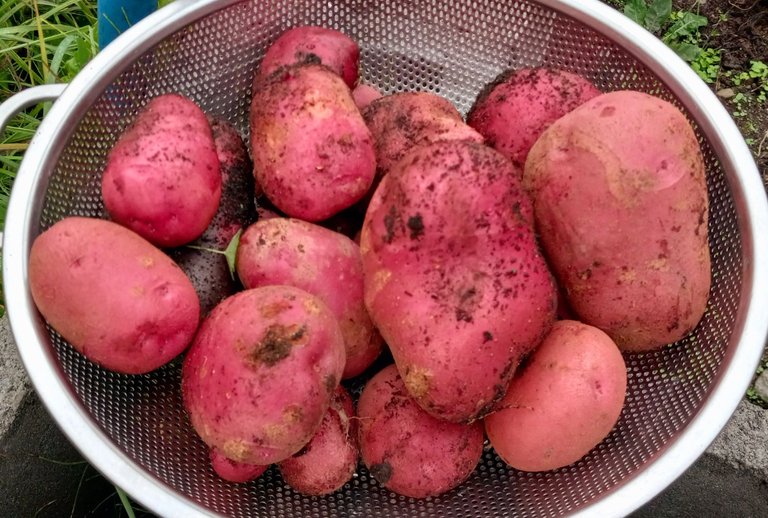
We actually grew these from regular store-bought organic potatoes that had started sprouting in the vegetable drawer. I know some people swear by formal "potato starts" but we have never gone that route.
Soon it will become time to put in winter potatoes so there's always something that needs to be done! We're still trying to reduce the amount of lawn we have and replace it with vegetable growing space.
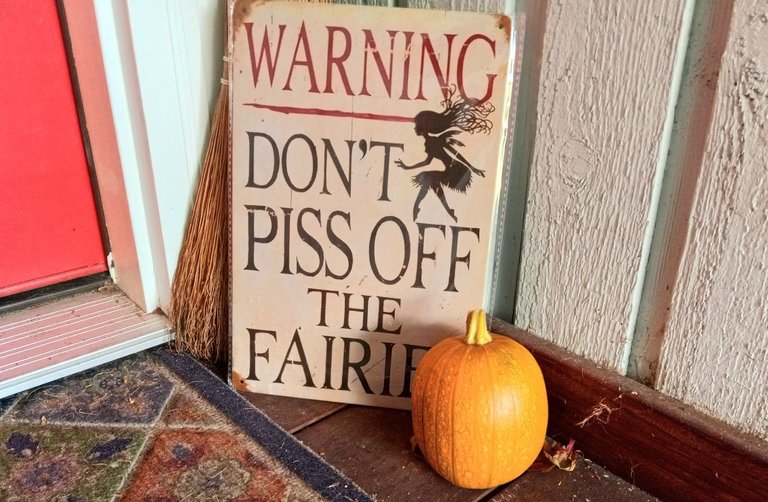
A home grown pumpkin by the front door
Tiny Pumpkins...
It is probably true of every garden that not everything turns out as expected. This year we managed to grow some of the smallest pumpkins ever and there were just not very many of them either.
So what went wrong?
In the past we've always had huge bumper crops of pumpkins — often of impressive sizes — so it was a surprise. After some discussion and debate we've come to the conclusion that we somehow ended up accidentally saving some seeds from non-heirloom pumpkins and unfortunately the hybridization left the building and leaving us with a very small natural "root" form. Illustrates the importance of only saving heirloom strain vegetable seeds!
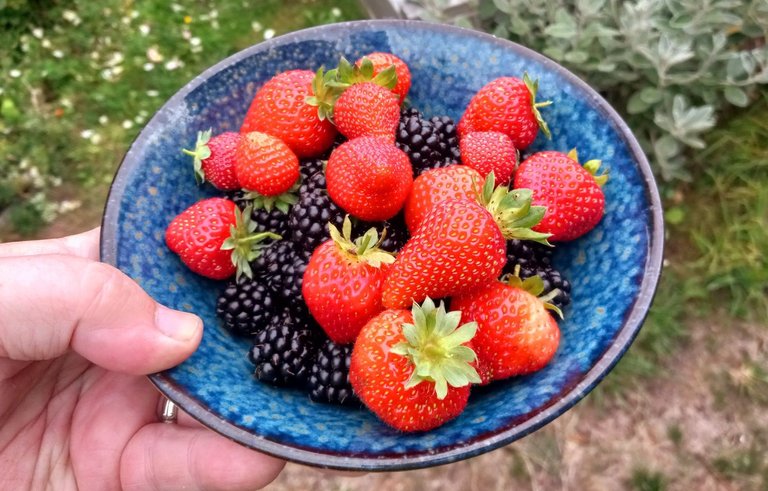
Fresh strawberries... in OCTOBER!
The Late Strawberry Experiment
Here in Western Washington, the typical season for strawberries tends to be mid-June through the end of July; maybe mid-August if you push your luck.
This year, we tried an early-season "winter haircut" for the strawberry plants, which — we were told — would result in a second late crop of berries.
Well, it worked!
There are only a few berries left now, but we could often pick a handful or two daily, all the way up to about October 15th or so.
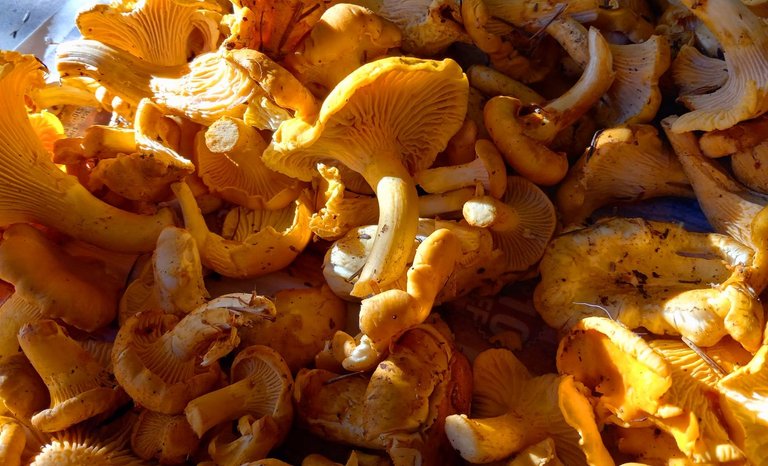
Foraged chanterelle mushrooms
Foraging
Our Urban homesteading efforts also includes a fair amount of foraging.
In the course of this past year, that has included both foraging on our property, as well as in nature around us.
The chanterelle mushrooms pictured above came from a recent chip to the forest, but we have also gathered dandelions, rose hips, nettles, meadow mushrooms and various other plants from around us.
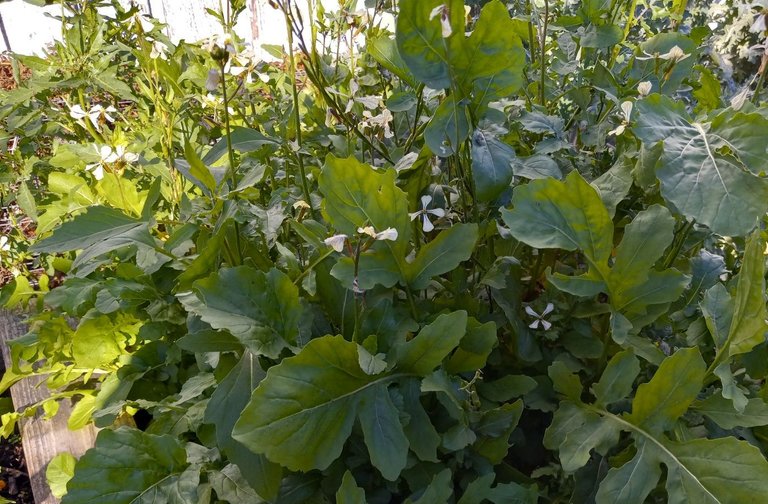
Late season arugula
As the season gradually comes to a close, we still have a few things growing that we will continue to enjoy such as a healthy crop of arugula and other greens. The herb garden is also still going strong.
Within the next few weeks, we also have some final seed gathering to do, for next year's garden... although our biggest project will be to condition the soil in our raised beds, which has gotten a bit "tired."
And, of course, there are still many flowers adding a colorful touch to the garden as it winds down!
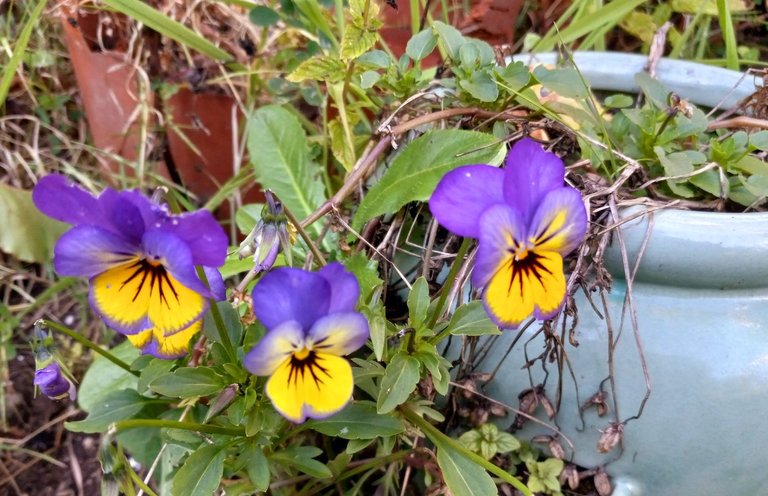
Pansies that self-seeded from a hanging basket in our back yard
Many of the flowers in the Laughing Dragon garden are "volunteers" that keep self-seeding for year to year.

Nasturtiums have popped up almost everywhere! We have come to think of them as "the cats of the flower kingdom" because they pretty much never do what we want them to and suddenly show up in places we didn't expect!
Thanks for visiting! Comments are always welcome!
(All images are my own; some of these are by @denmarkguy who co-gardens with me!)


Thank you for reading, please share your thoughts because I love comments and then take a minute to look at the community of #Silverbloggers and join us if you think you qualify. (If you think you qualify, you probably do!)
